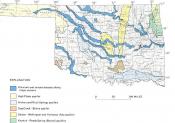Water Management
We are asking residents to join us in becoming water wise. A community that is more informed and prepared will have a greater opportunity to rebound quickly from weather and climate-related events. Resilience is the ability to prevent a short-term hazard event from turning into a long-term community-wide disaster. It has been defined as “the ability of communities to rebound, positively adapt to, or thrive amidst changing conditions or challenges – including disasters and climate change – and maintain quality of life, healthy growth, durable systems, and conservation of resources for present and future generations.” Colorado Resiliency Framework 2015.
Each of us plays an important role in protecting our water resources.
Learn more about water use at the Environmental Protection Agency's site, Water Sense. The goal is to help people understand the importance of water efficiency and take positive actions to reduce their water use – in their homes, outdoors, and at work.
WaterSense website
"Water as an Oklahoma resource may be termed as abundant, scarce or both, depending on the time, location and use. Droughts bring scarcity. Floods bring abundance. Quality and volume requirements raise questions and concerns about specific uses. Planning and management can improve consistency of water availability for a variety of uses. However, it is clear Oklahoma water is becoming increasingly valuable. Experts agree that the pressure on Oklahoma’s water supply may increase with population growth, environmental regulations and climate change, among other factors. With continuing competition among growing communities to secure their water supplies, and pressure from the rapidly growing urban complex in North Texas, options to conserve Oklahoma’s water resources are worthy of consideration." - Oklahoma Water Resources Board
Do you know how much water you use indoors a day? Use the USGS link to see how many gallons you or your household use daily. Water government website
Floods can have social, economic and environmental consequences. As most people are well aware, the immediate impacts of flooding include loss of human life, damage to property, destruction of crops, and loss of livestock. Infrastructure such as roads and bridges can be damaged or destroyed, this disruption impacts communities and individuals. In natural systems, floods play an important role in maintaining key ecosystem functions and biodiversity. However, for urban areas and areas modified by human activity, floods have a detrimental impact.
The amount of runoff has increased due to urban development. Drainage calculations for new development require that post development runoff does not exceed pre development conditions. For existing homes, there are methods that can be used to mitigate runoff effects.
Plans for new developments typically require formal drainage plans to verify they meet the requirements of the Code of Ordinances of the City of Mustang (“Code”). In most instances, owners are required to present engineered plans and calculations to prove the volume of storm water runoff remains at predevelopment levels during all phases of construction. Chapter 50, Article III of the Code addresses this subject in detail. Our Drainage Policy (Ordinance 732) is also applicable to any new development. A copy of this ordinance is available on the bottom of this page.
Oklahoma Proven is an Oklahoma State University program designed to help consumers select the best plants for Oklahoma gardens. The goal has been to select plants that are tolerant of the varied and difficult environmental conditions found throughout Oklahoma. The plant list provided will help match environmental conditions with suitable plants. Please visit their website to explore the plant list and to learn more. Plant selection can play a large role in the amount of water used in the garden. Oklahoma Proven Website
Supporting Documents
Mustang Ordinance - Drainage (2 MB)
OSU Guide to Water Smart Landscaping (12 MB)
OK Water Demand (792 KB)
Saving Water (7 MB)
Web Links




